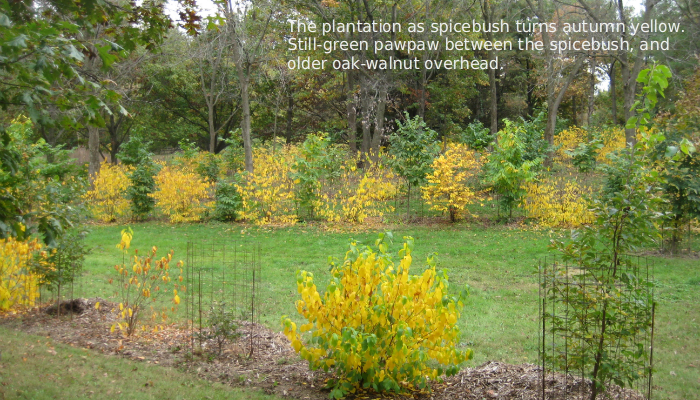Annual Report: Lon’s Butterfly Plantation 2016

You perhaps already know that in 2010 I began planting some of our rarest native trees, shrubs, and vines, whose leaves are required food for the caterpillars of some of our rarest native butterflies. This plantation is now about four acres. Design details regarding the 4-layer canopy were in my 2015 report.
Pipevine and the Pipevine Swallowtail:
In 2015 these caterpillars ate every leaf off the older and larger vines, and did not touch the younger ones nearby. This year there was no damage to any of the pipevines and no sign of the caterpillars or adults, seemingly the opposite of my 2015 hypothesis that a resident population was becoming established. But this species is capable of entering into a cycle in which the chrysalis overwinters through two winters (diapause) before emerging as an adult. There is speculation that this might throw off the breeding cycle of their predatory wasps, or it might give the pipevines opportunity to recover to feed the next generation. My pipevines did all recover and flourished. So, has my little population crashed, or are they biding their time to surge next year? Stay tuned for 2017!!!
Spicebush, Sassafras, and the Spicebush Swallowtail:
Both of these closely related plants can feed this caterpillar. This year I observed only two adults nectaring nearby and both did hang around spicebush plants, but I found no eggs, no caterpillars, and no leaf nests. However, there are now so many spicebushes, in addition to two dozen sassafras, that I might not have noticed the evidence. I also planted 58 more small spicebushes nearby.
Pawpaw and the Zebra Swallowtail:
This year a five-year old and seven-year-old pawpaw bore fruit, and by next year others might also. I observed no adult zebra swallowtails flying about, and they are very conspicuous flyers, very hard to overlook aloft. I also noticed no eggs or caterpillars and can only conclude there were fewer than past years and maybe none.
Persimmons and the Luna Moth:
While not so rare, the luna is a fascinatingly beautiful creature whose caterpillars are generalists but especially fond of persimmon leaves. This year, two of my little persimmon trees bore about a dozen fruits each of poor quality, which the deer gobbled up anyway. All of the dozen little trees had a strange leaf blight, which I’ve never noticed before. I found two dead and one live luna adult around our place, although none were on a persimmon tree.
Passionflower and Its Camp Followers:
As climate change creeps in on us, we are increasingly experiencing the climate that used to be the norm for the Mount Pleasant – Burlington – Keokuk region. This brings us into or near the historic climatic range of several species of passionflower, which have their own coterie of butterflies whose caterpillars require passionflower leaves. So in the spring of 2015 I experimented with planting two species, the purple- and the yellow-flowered. Both overwintered successfully and grew well this summer. At the rate that climate change is accelerating, some of their obligate butterflies might arrive in a few years.


